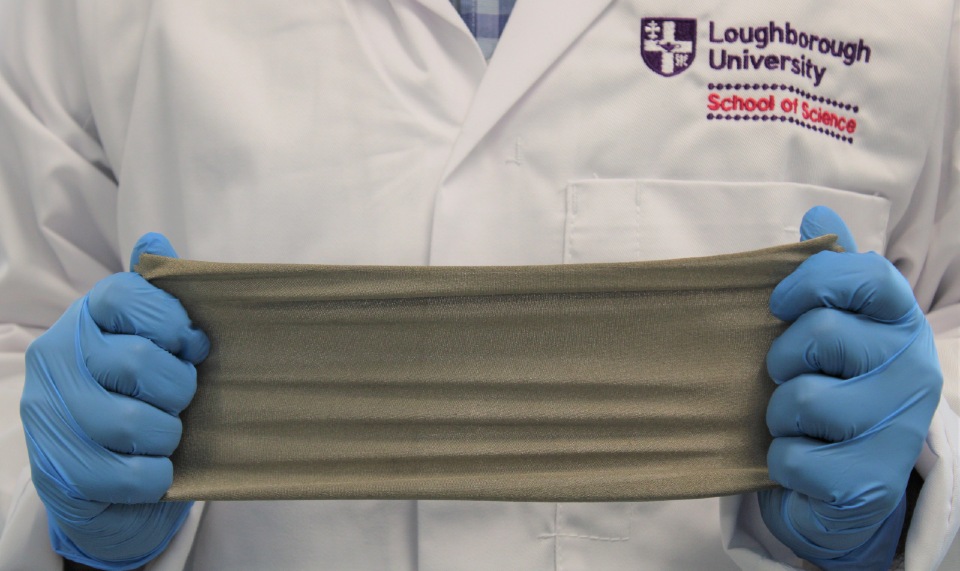Dr Ishara Dharmasena, of the School of Mechanical, Electrical and Manufacturing Engineering (MEME), and a team of researchers at the University of Moratuwa (Sri Lanka) have developed a new, scalable manufacturing technique to create wearable fabrics embedded with very small power generators known as ‘Triboelectric Nanogenerators’ (TENGs).
The technique, which is detailed in a paper published in ACS Applied Electronic Materials, can turn common textile materials into ‘energy-generating textiles’ using established methods such as yarn coating, dip coating, and screen-printing to apply triboelectrically active solutions.
The wearable TENG-containing fabrics are similar in texture to knitted materials used to make jumpers and t-shirts.
But unlike your basic pullover, these energy-generating textiles can produce electricity to operate low-power electronics using our natural body movements.
The 4cm-by-4cm lightweight and thin TENG textile the researchers created produced over 35V of voltage using mild artificial movements that replicated slow body movements, and this could potentially power low-power health sensors, environmental sensors, and electronic devices in the near future.
Dr Dharmasena says the technology will be “massively beneficial for future smart textile and wearable electronic applications” and could support the global shift to remote health monitoring.
“With this research, we were able to demonstrate that we can use the existing textile materials and common textile manufacturing techniques to produce wearable TENGs with balanced electrical and comfort properties”, said Dr Dharmasena.
“The all-textile TENG technology we have developed a convenient power source and a self-powered sensor technology – something that may have been seen as science fiction probably a decade ago!
“This work will lead to further research on how we can convert the common textiles into energy-generating clothing for various future applications including healthcare, communication, sports and personal electronics.”
How it works
TENG devices collect static charges, like those that make a balloon stick to a wall when rubbed against a jumper, or those that give a sudden shock when you step on a carpet.
Once attached to the human body or clothing, TENG devices ‘slide’ or ‘vibrate’ with movements to create an electrical signal through a process called ‘electrostatic induction’.
Experts have looked to use TENGs in fabric before, but, due to them being made of rigid and bulky plastic sheets and expensive manufacturing techniques, past clothing applications have been unsuccessful.
Dr Dharmasena’s technique overcomes these issues by combing new conventional textile materials and carefully engineered TENG device designs.
These devices display improved electricity generation and meet most of the comfort and durability requirements for textile products - a balance that has been very difficult to achieve so far in TENG research area.
What’s next
This research is part of Dr Dharmasena’s Royal Academy of Engineering-funded project focused on creating sensor-containing super-smart textiles that can be used for remote health monitoring.
He and his team are now looking at practical applications of TENG technology and are keen to hear from industrial and academic collaborators in the areas of smart textiles, health sensing technologies, nanotechnology, and fabrication.
If anyone is interested in collaborating in this area, they can email Dr Ishara Dharmasena at: r.i.dharmasena@lboro.ac.uk.
To read the paper, titled ‘Scalable Textile Manufacturing Methods for Fabricating Triboelectric Nanogenerators with Balanced Electrical and Wearable Properties’, in its entirety, click here.
For more on Dr Dharmasena’s work, visit his Research and Impact profile here or watch the below YouTube video:

